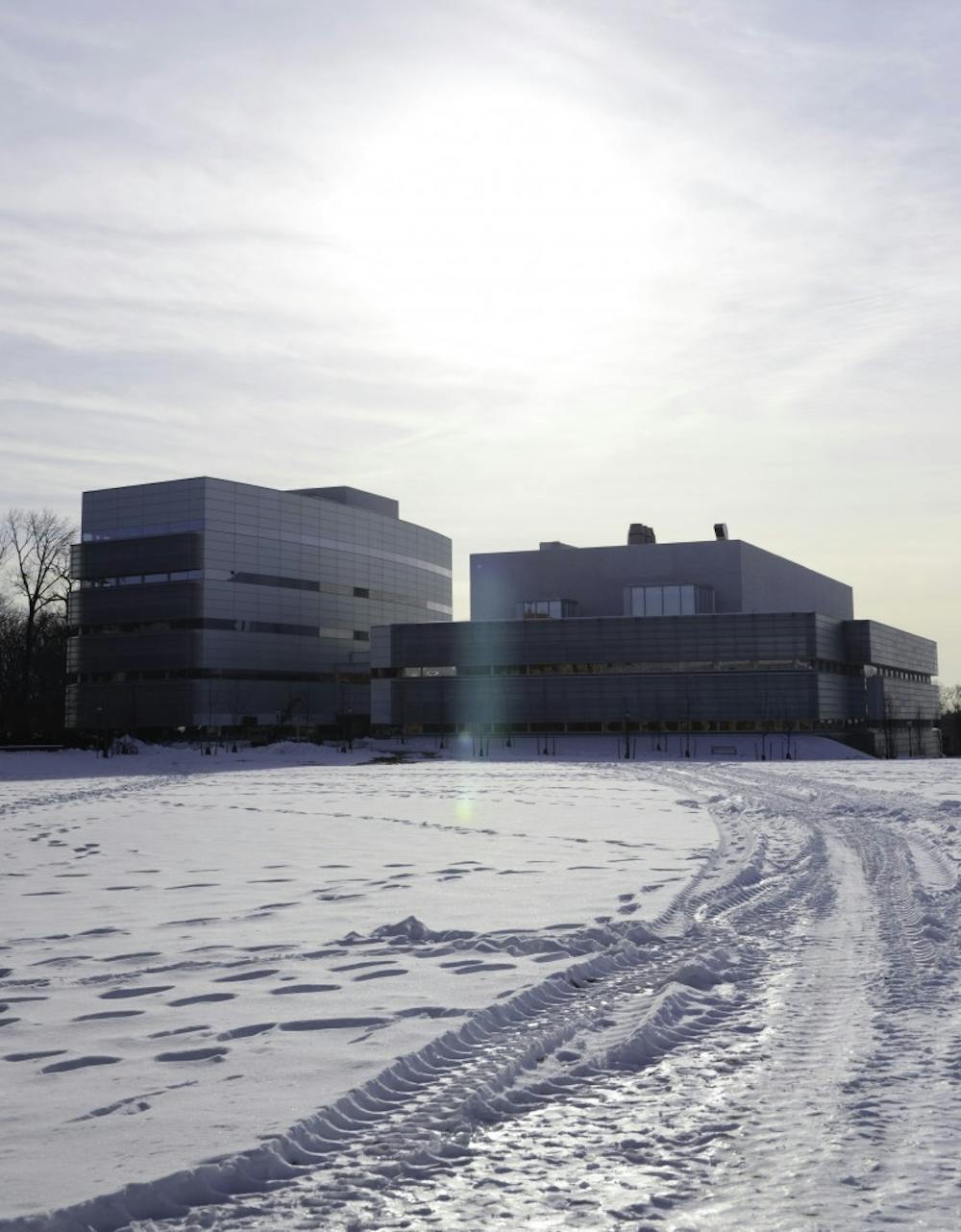 Classes are now being held in the new neuroscience building, which houses the Princeton Neuroscience Institute and the psychology department in Peretsman-Scully Hall.
Classes are now being held in the new neuroscience building, which houses the Princeton Neuroscience Institute and the psychology department in Peretsman-Scully Hall.
Construction of the new building, which is named for Nancy Peretsman ’76 and Robert Scully ’72,began in the spring of 2010 and was completed in fall of 2013. It reached full occupation in January. The building cost about $180 million in total.
The structure is equipped with laboratories, office spaces, workrooms, conference spaces, a study area and classrooms and is expected to house up to50 faculty, 30 departmental staff and 250 to 300graduate students, postdoctoral fellows and research staff.
The opening of the new building has elicited positive reactions from some students and faculty members.
“My class is in the lower level, but it’s a really nice room,” said Margaret Wang ’17, who has NEU 259: Introduction to Cognitive Neuroscience in the new auditorium. “The seats are really nice, so I don’t get distracted by discomfort. It is very convenient.”
Wang is also a copy editor for The Daily Princetonian.
Erika Davidoff ’17, enrolled in the same course, also said that the lecture hall is nice. Though she noted that the hall has a large capacity, she said the acoustics are “great” and it seems more intimate than the McCosh Hall auditoriums.
Overall, the building seemed to make a positive impression on Davidoff.
“I love the general aesthetic of the building,” Davidoff said. “It seems a little complicated to navigate, but it has all these study areas and meeting rooms tucked away in places, and I feel like there are a lot of great spaces to explore.”
In addition to the lecture hall and classrooms, the building houses laboratories in which both students and professors can conduct research.
“I think our lab space is definitely a lot bigger,” said Dennis London ’14, who will now conduct research for his senior thesis in the new lab. “Previously it was a little bit cramped.”
London added that he thought it was “nice” that different laboratories are located next to each other because it allows students conducting research in other fields to mingle more.Students conducting research in the building are also able to use the office spaces available to them.

“The office is really nice,” London said. “You can write on the doors because they’re frosted glass, so that’s pretty cool.”
Davidoff works in the Witten Lab, which has also moved into the new building. Although she hasn’t been in the lab for more than a few hours, she said she thinks it is great.
“The office space is incredible and will really help us communicate with each other,” Davidoff said.
Assistant professor of psychology and the Princeton Neuroscience Institute Tim Buschman said he thinks the building is “fantastic” especially because everything and everyone in the neuroscience department is in the same building.
“My lab is in one place and the facilities are top notch,” Buschman said. “It’s nice being in one building. I think that’s the biggest advantage.”
Professor of linguistics in the Council of the Humanities Adele Goldberg added thathaving both the neuroscience and psychology departments combined is “wonderful.”
However, there have been a few problems transitioning into the new building.
“There were a few problems with technology in the first few classes, but I think they’re getting it worked out,” Wang said. “There’s also a little construction happening outside, but they’re going to get that done soon.”
There have been a few kinks with the Wi-Fi network, Davidoff noted, addingthat it wasn’t unsolvable.Davidoff said that she and her lab members have also had some trouble with lighting in the lab, but they have been working with the building staff to fix the issues.
Moving into the new lab has also disrupted students’ work, London said, noting that it took a week and a half to disassemble and pack all of his gear and then move it from Moffett Laboratory. He added that it would take the same amount of time to get everything together in the new lab.
“We don’t have our lab set up yet, so at this point, it is just a space,” London said.
As a result of the move, London and others unable to perform experimentsfind themselves with extra time on their hands.
“I’m using that as motivation to start writing my thesis. It makes me write, but hopefully the down time won’t be too long,” London said. “I would like to get [the experiments] started as soon as possible to put it in my thesis.”
The location of the new building on campus has also led to mixed reactions.
“I know some people were complaining about it being too far from their other classes,” Wang said. “For me it’s not too bad, but it can be a little out of the way.”
Davidoff said that the location of the building seemed fine because it places it in the “science neighborhood” near buildings like the Frick Chemistry Laboratory, Jadwin Hall and the Carl Icahn Laboratory.
“I haven’t heard anyone complaining about [the location], but then I’m a Forbes engineer, so I’m pretty used to things being far,” Davidoff said.
Megan Soun ’17, who was in PSY 101: Introduction to Psychology, said she thought the building was very nice as well, but she ultimately decided to drop the class. Distance, however, was not much of a problem for her.
“My walk from East Pyne to the new building in 10 minutes probably played a small factor in my decision to drop the course,” Soun said.
Clarification: An earlier version of this article did not disclose that Margaret Wang '17 is a copy editor for The Daily Princetonian.








